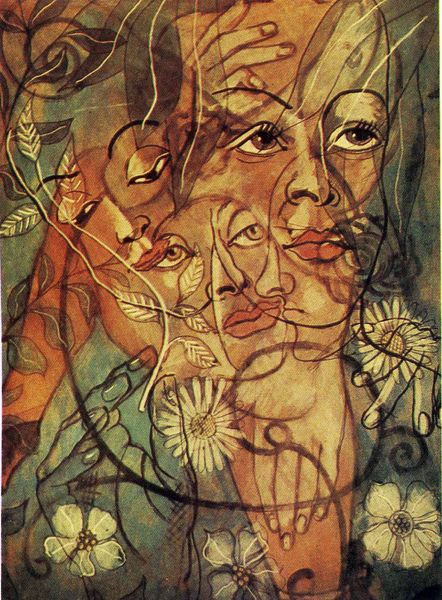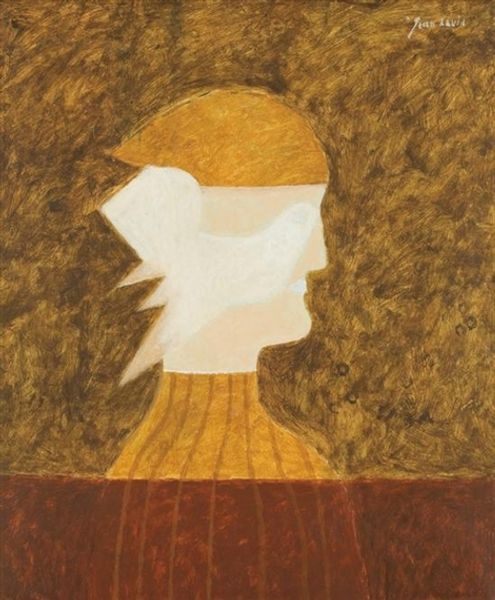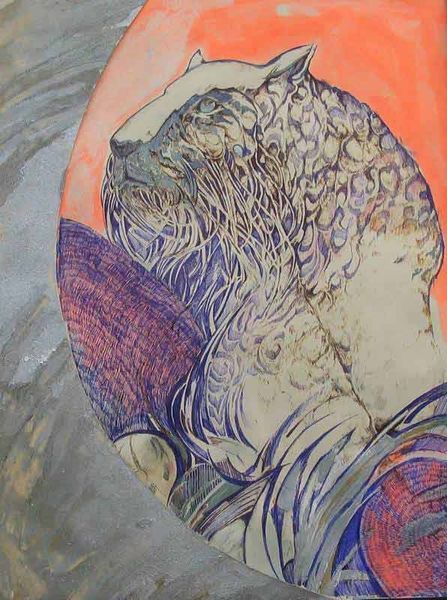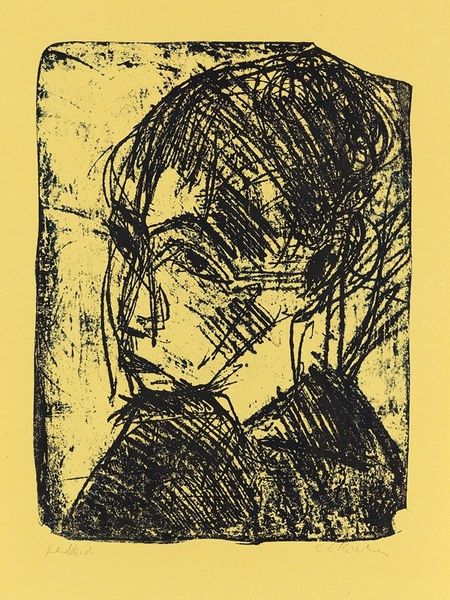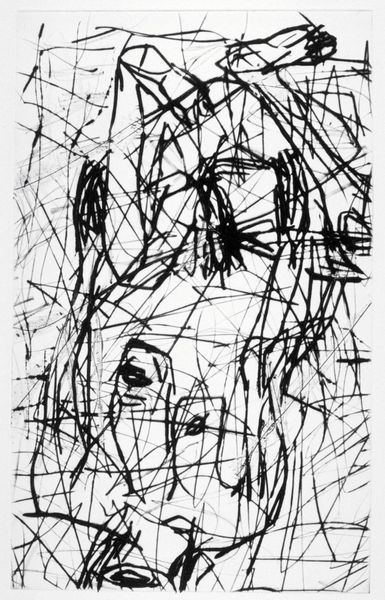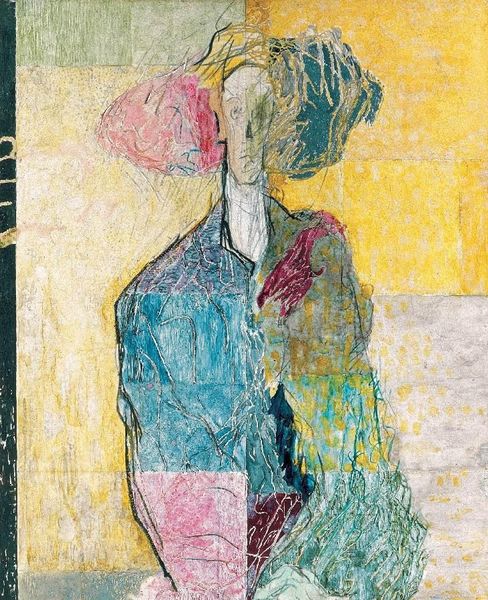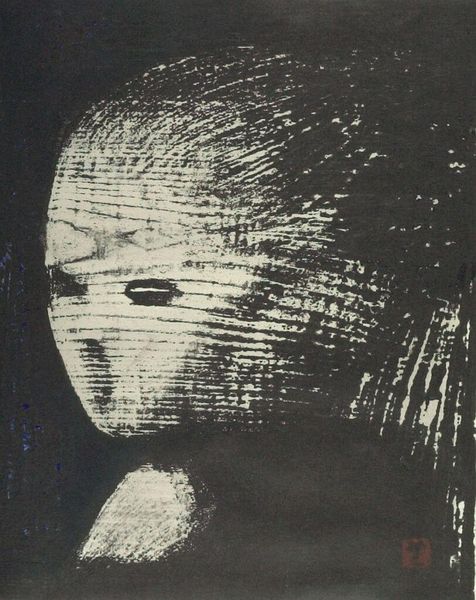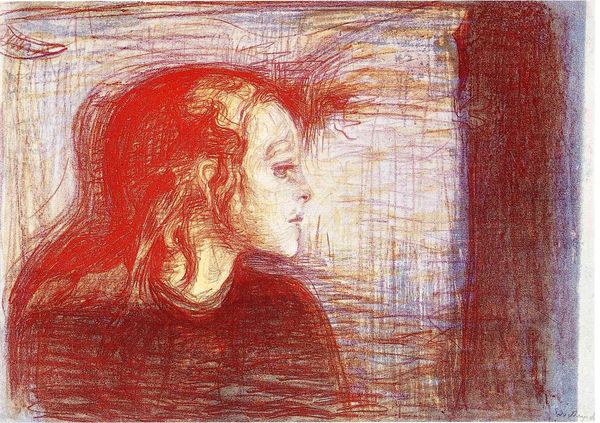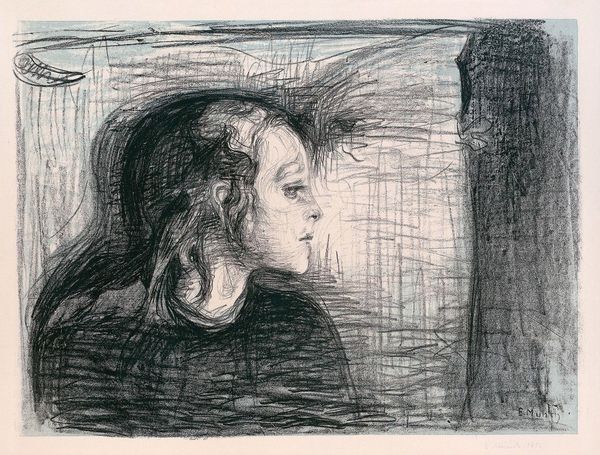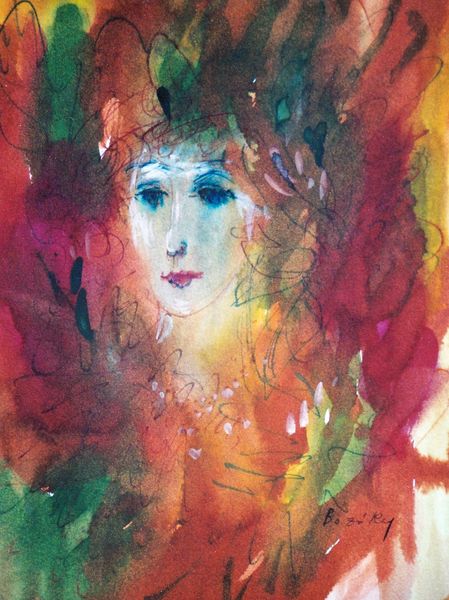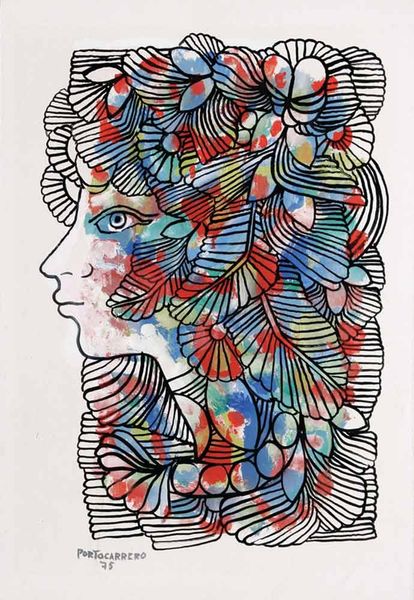
drawing, mixed-media, paper, ink
#
portrait
#
drawing
#
mixed-media
#
contemporary
#
paper
#
ink
#
linocut print
#
abstraction
Copyright: Pierre Alechinsky,Fair Use
Curator: Pierre Alechinsky's "Page of the Universal Atlas, II. Bay of Biscay," created using mixed media like ink and drawing on paper, presents us with an intriguing juxtaposition. What is your immediate response to it? Editor: It’s…intimate. I'm immediately drawn to the stark contrast between the frantic, almost violent ink strokes of the figure and the delicate cartography behind. I wonder about the source of that energy. Curator: Alechinsky often used existing documents and maps as substrates, merging geographical narratives with psychological portraits. That Bay of Biscay map in the background resonates, does it not? A body of water known for its treacherous nature and its role in maritime history. It serves as a stage for the psyche portrayed here. Editor: Right, and consider the labor invested in producing both. A mass-produced map, intended for practical navigation, now supporting a unique, expressive artwork. There’s a conversation happening between standardized production and individualized creation. The ink, too – humble, accessible – contrasts with the potential preciousness of the “art.” Curator: Precisely! The ink work suggests a frenetic energy that captures a depth of feeling; it feels restless and evocative. There’s an intentional rawness to those strokes; they build a figure haunted by, or perhaps intertwined with, this geographic location. Are the maps the territory, or is this portrait a territory overlaid? Editor: I like the term 'overlaid', it gets to the method. And Alechinsky chooses *this* method. Consider the choice of materials, too. It suggests an approach rooted in immediacy and repurposing. No grand canvas here, but a humbler act of altering something existing to say something else. Curator: It all ties into the broader narrative, then. The Universal Atlas speaks to collective understanding and exploration of the world. Alechinsky layers a personal narrative on top of that shared framework, creating a complex interplay between public and private domains. What endures is this potent relationship that invites us into both geographic and emotional cartographies. Editor: Well put. For me, thinking about the process has reframed it: from seeing the Bay of Biscay as a fixed landscape to viewing this ‘page’ as an opportunity for exploration.
Comments
No comments
Be the first to comment and join the conversation on the ultimate creative platform.
